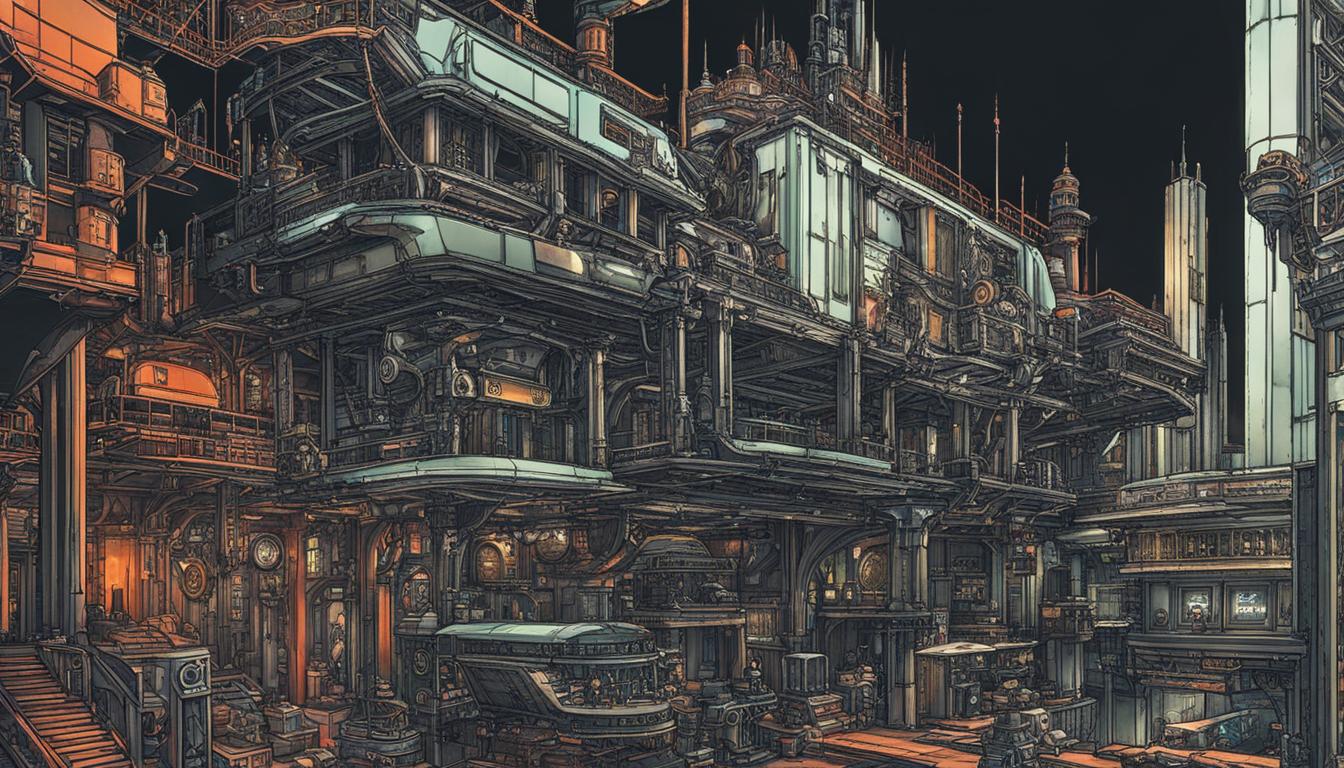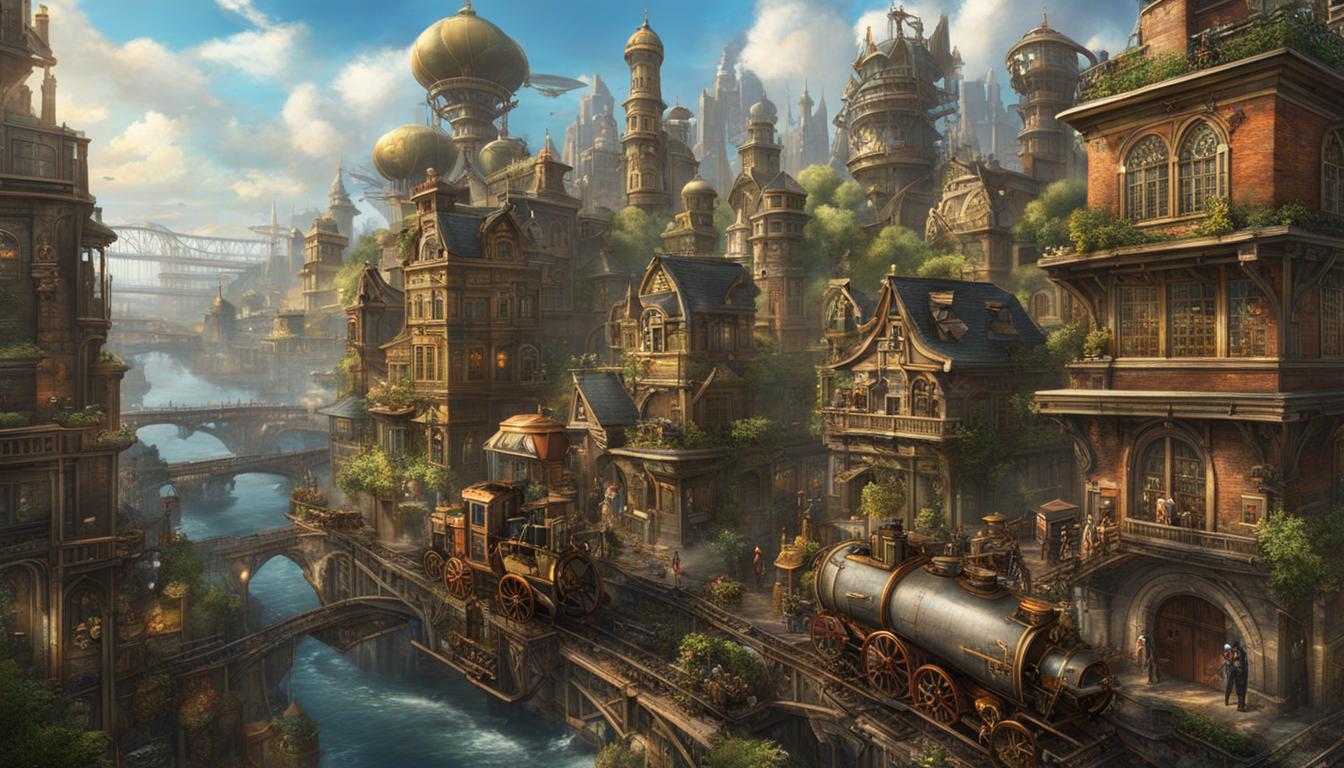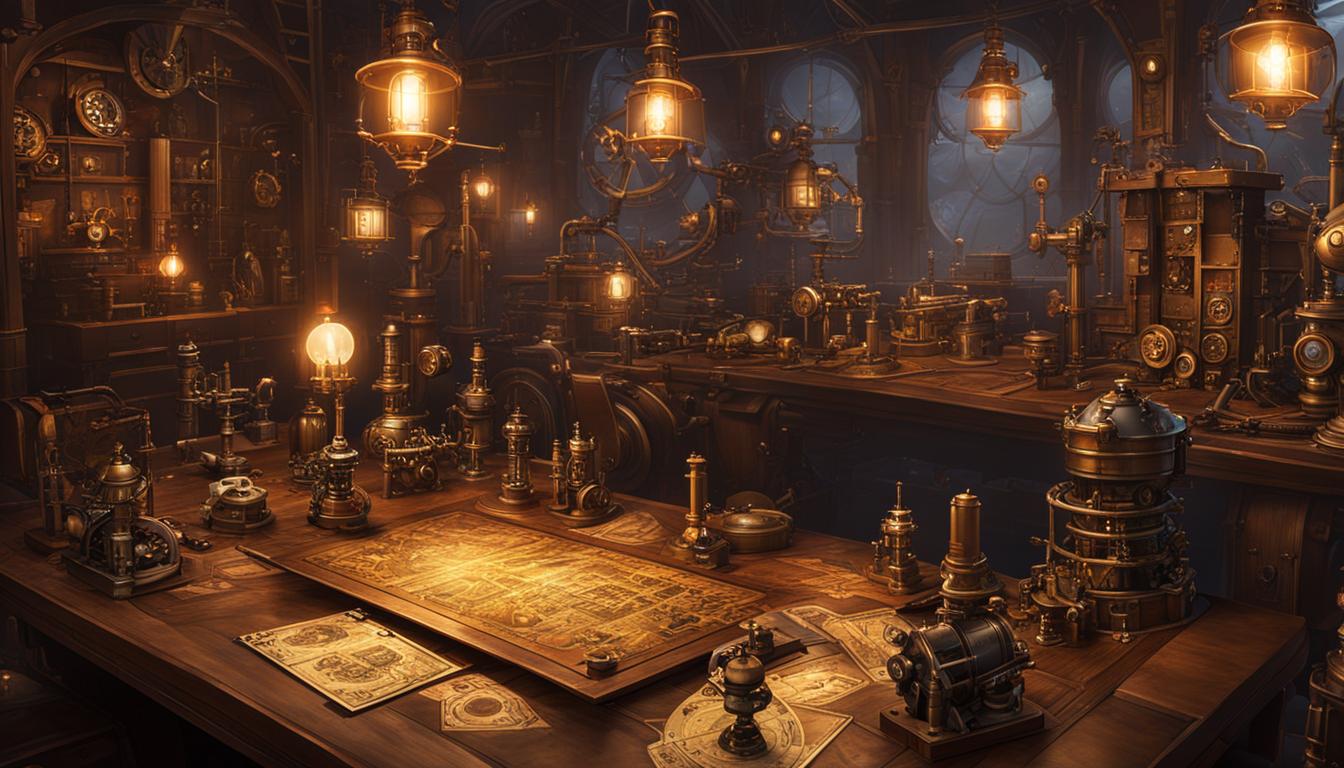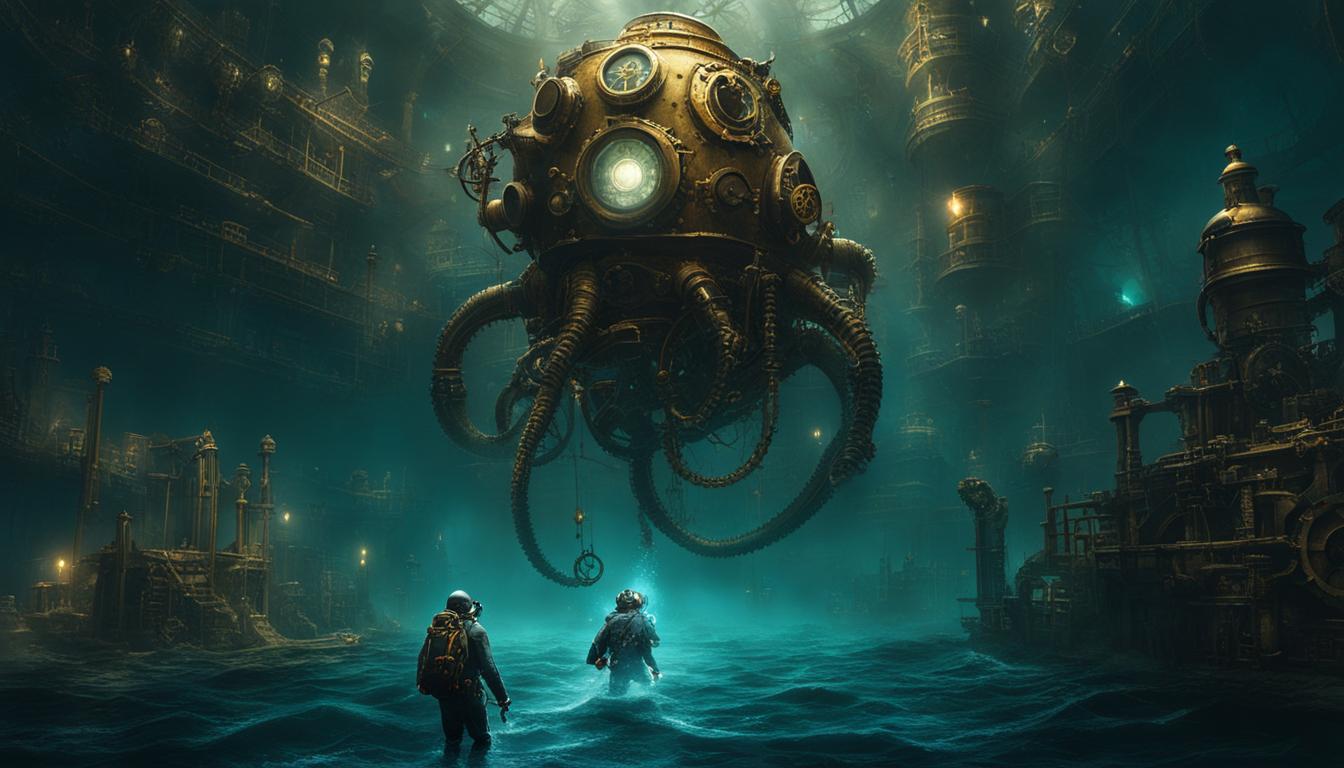The popularity and growth of cyberpunk and steampunk cultures in the U.S. have been fascinating to witness. While cyberpunk, with its futuristic themes and exploration of the blurring line between man-made technology and nature, has thrived in recent years, steampunk, with its retro-Victorian aesthetic and focus on revealing the inner workings of technology, has seen a decline. This shift in popularity can be attributed, in part, to the rise of consumer electronics and the advent of the iPhone, which made technology more accessible but also more inscrutable. Steampunk, once a cultural response to the fast-paced evolution of technology, has gradually lost its appeal, while cyberpunk continues to thrive in various forms of media, from movies like Ready Player One to video games like Cyberpunk 2077.
Key Takeaways:
- The growth of cyberpunk has surpassed that of steampunk, with cyberpunk continuing to thrive in various forms of media.
- Cyberpunk and steampunk differ in their themes and aesthetics, with cyberpunk focusing on the future and the integration of technology, while steampunk embraces a retro-Victorian aesthetic and the revealing of technology’s inner workings.
- The rise of consumer electronics, like the iPhone, has contributed to the decline of steampunk’s popularity.
- Cyberpunk’s impact on steampunk can be seen in the incorporation of futuristic themes and the blending of the two genres in contemporary fiction.
- Cyberpunk and steampunk have left a lasting impact on popular culture, shaping design, and inspiring movements like the “Right to Repair” movement.
The Origins and Evolution of Cyberpunk
Cyberpunk, as a sub-genre of science fiction, emerged in the 1970s and has since become a prominent and influential genre. Building on hard-boiled fiction and rejecting utopian sci-fi, cyberpunk explores the integration of society and technology in dystopian settings. It often features outsider protagonists who fight against oppressive mega-corporations using technological means. The origins of cyberpunk can be traced back to authors like Philip K. Dick, William Gibson, and Bruce Sterling, with works like Do Androids Dream of Electric Sheep?, Neuromancer, and The Difference Engine.
The genre has evolved over the years, influencing various forms of media, including movies, television, and video games. Cyberpunk’s impact on steampunk development can also be seen, as it brought futuristic themes and explored the role of technology in society. While cyberpunk’s focus is on the merging of man and machine in a high-tech future, steampunk’s retro-Victorian aesthetic emphasizes the beauty of clockwork and steam-powered machinery.
“Cyberpunk brought futuristic themes and explored the role of technology in society.”
These distinct differences have shaped the evolution of both genres. However, cyberpunk’s rise to popularity in recent years has outshined steampunk, leading to a decline in the latter’s influence. Nevertheless, the two genres have continued to inspire each other, with elements of cyberpunk influencing steampunk narratives and designs. This convergence has given rise to a new wave of storytelling that combines the gritty, futuristic elements of cyberpunk with the nostalgic, retro-futuristic charm of steampunk.
| Cyberpunk | Steampunk |
|---|---|
| Focuses on high-tech, dystopian future. | Embraces a retro-Victorian aesthetic. |
| Explores the merging of humans and technology. | Reveals the inner workings of steam-powered machinery. |
| Influenced by authors like Philip K. Dick and William Gibson. | Draws inspiration from Jules Verne and H.G. Wells. |
The Rise and Fall of Steampunk
Steampunk, a captivating design movement and aesthetic that emerged in the mid-2000s, offered a unique and compelling vision of an alternative universe. This universe was powered by 19th-century technology, presenting a retrofitted world filled with Victorian charm and ingenuity. Steampunk gained widespread popularity between 2007 and 2012, influencing not only fashion and literature but also theme parks and various forms of media. However, as technology advanced and became more accessible, steampunk’s appeal gradually diminished, leading to its decline.
The decline of steampunk can be attributed to several factors. One such factor is the rise of consumer electronics, most notably the advent of the iPhone. The rapid evolution of technology made steampunk’s retro-Victorian aesthetic seem less relevant and captivating. As consumer electronics became sleeker and more enigmatic in their inner workings, the allure of steampunk’s focus on revealing the mechanisms of technology also waned. Furthermore, cultural interests shifted over time, leaving steampunk behind as audiences sought new narratives and aesthetics.
Despite the decline of steampunk, the genre has not completely faded away. In fact, steampunk has found a way to adapt and stay relevant by incorporating elements of cyberpunk, another popular sub-genre of science fiction. By blending cyberpunk’s futuristic themes and exploration of technology’s role in society, steampunk has rejuvenated itself in contemporary fiction. This blending of cyberpunk with steampunk has given rise to unique narratives that offer a fresh take on both genres, captivating audiences with their imaginative crossovers.
| Cyberpunk | Steampunk |
|---|---|
| Explores integration of society and technology in dystopian settings | Presents a retro-Victorian aesthetic and reveals inner workings of technology |
| Features outsider protagonists fighting against oppressive mega-corporations | Incorporates 19th-century technology to power everyday objects |
| Originated in the 1970s and has continued to evolve across various media | Gained popularity in the mid-2000s and still influences design and fiction |
While steampunk may have experienced a decline in popularity, it has left a lasting impact on design and culture. The movement has inspired the “Right to Repair” movement, advocating for repairable and transparent consumer electronics. Additionally, steampunk’s blending with cyberpunk has paved the way for unique narratives that combine the best of both genres. As speculative fiction continues to evolve, steampunk and cyberpunk are sure to find new ways to captivate audiences and leave a lasting legacy.
The Continuing Impact of Cyberpunk and Steampunk
While steampunk may have experienced a decline in recent years, both cyberpunk and steampunk continue to exert their influence on popular culture. Cyberpunk, with its futuristic themes and exploration of the relationship between society and technology, has paved the way for the growth and evolution of contemporary fiction. From dystopian movies like Ready Player One to immersive video games like Cyberpunk 2077, cyberpunk captivates audiences with its intriguing narratives.
Steampunk, on the other hand, may have lost some of its former popularity, but its legacy lives on in design and fiction. This retro-Victorian aesthetic, with its focus on the inner workings of technology, has inspired movements like the “Right to Repair,” advocating for transparent and repairable consumer electronics. Steampunk’s impact on design can be seen in the intricate craftsmanship of handmade gadgets and the blend of Victorian elegance with futuristic elements.
The blending of cyberpunk and steampunk has given rise to a new wave of narratives that combine the best of both genres. As cyberpunk continues to shape fictional worlds, steampunk elements add a touch of nostalgia and mechanical wonder, creating unique and captivating stories. This fusion allows for the exploration of technology’s impact on both past and future, presenting readers and viewers with a rich and immersive experience.
As speculative fiction evolves, the growth and impact of cyberpunk and steampunk are sure to continue shaping the imagination of future generations. These genres not only provide entertainment, but they also encourage us to reflect on the role of technology in our lives and the possibilities that await us in the ever-changing landscape of the future.
FAQ
What is cyberpunk?
Cyberpunk is a sub-genre of science fiction that explores the integration of society and technology in dystopian settings. It often features outsider protagonists who fight against oppressive mega-corporations using technological means.
Who are some influential cyberpunk authors?
Some influential cyberpunk authors include Philip K. Dick, William Gibson, and Bruce Sterling. Their works, such as “Do Androids Dream of Electric Sheep?”, “Neuromancer,” and “The Difference Engine,” played a significant role in shaping the genre.
What is steampunk?
Steampunk is a design movement and aesthetic that envisions a retrofitted alternative universe where 19th-century technology powers everyday objects. It combines elements of Victorian style and steam-powered machinery.
Why has steampunk seen a decline in popularity?
Steampunk’s decline can be attributed to various factors, including the rise of consumer electronics, such as the iPhone, and shifts in cultural interests. As technology became more accessible and advanced, the appeal of retro-Victorian aesthetics waned.
How have cyberpunk and steampunk influenced each other?
Cyberpunk has had a significant impact on the development of steampunk, influencing its futuristic themes and exploration of technology’s role in society. Steampunk, in turn, has incorporated elements of cyberpunk in contemporary fiction, blending the two genres to create unique narratives.
What is the impact of cyberpunk and steampunk on popular culture?
Cyberpunk’s exploration of technology and its societal impact has paved the way for futuristic themes and narratives in contemporary fiction. Steampunk, with its focus on revealing the inner workings of technology, has left a legacy in design and has inspired movements like the “Right to Repair” initiative.





